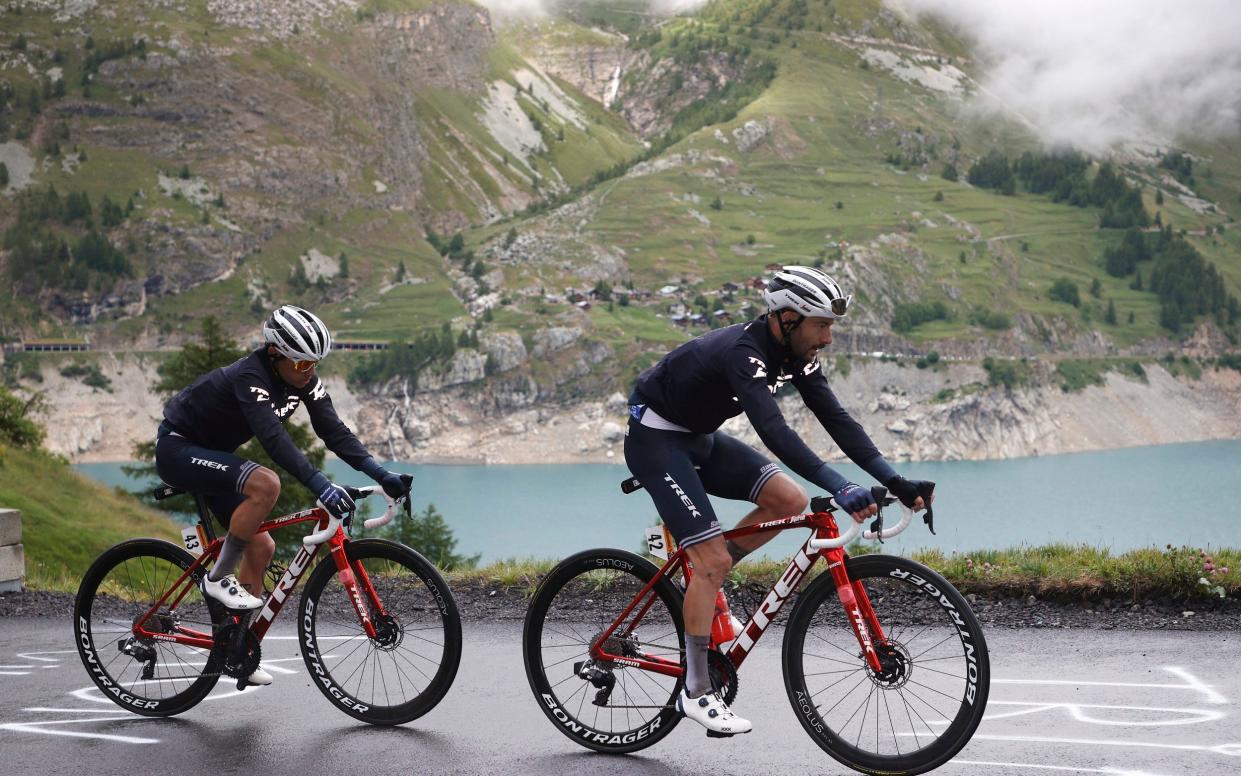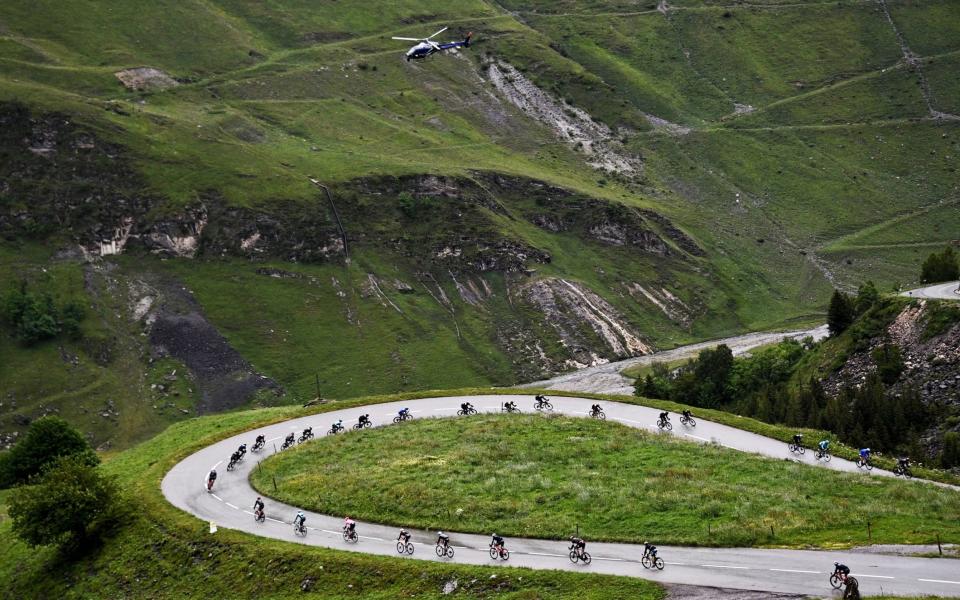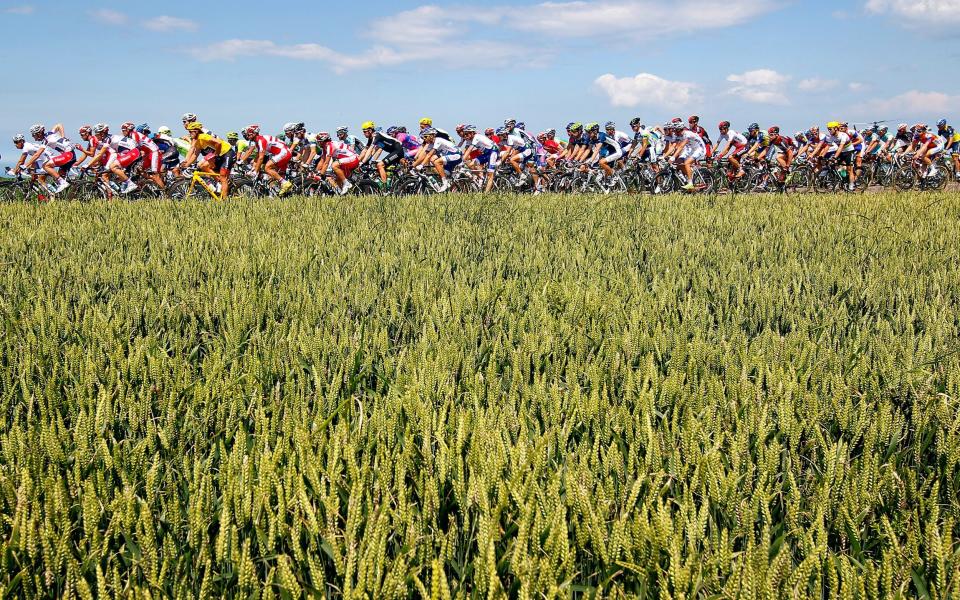France looks as glorious as ever as the Tour races on, but it has never felt further away

At the risk of frittering away your attention and/or patience before we have made it to the end of the first paragraph, it is a truth universally acknowledged (by this writer, anyway) that a major sporting event can be a defining chapter of any summer. It can be uplifting. It can be exasperating. It can be a cause for celebration or despair in equal proportion. And if the conditions are right, and the narrative fits, it can expand beyond the newspaper back pages to the big-font headlines of the front, and into the wider public consciousness.
This strange summer of 2021 is going to be blessed/cursed (delete according to personal opinion, and whether or not you gave up reading two sentences ago) with four such cases of the roar of the crowd spilling out into the world beyond – there to provide a quick snapshot of where we are, and how we are feeling, that will be recalled in years to follow.
This week’s return of Wimbledon – after Covid put paid to last year’s edition of baseline rallies, net-cord beeps and overpriced strawberries – is a literal test case, with capacity crowds being allowed into the All England Club as Britain stumbles back to its feet. The same thing, to an extent, applies to the Euro 2020 (2021) football tournament – the long-planned staging of which across the entire continent, rather than in a single host nation, feels like both a return to an unfettered normality and an ill-timed inconvenience when a virus is still stalking us.

On the subject of which, the imminent commencement of the postponed Tokyo Olympics (which will begin on July 23) should also prove to be a freeze-frame image of life during a pandemic. The Japanese authorities are yet to decide whether this sporting extravaganza will take place in front of cheering spectators – or in an empty arena whose resultant eeriness will be as memorable as any medal performance.
Somewhere in the midst of all the above lies the Tour de France. The world’s greatest cycle race has also felt the hand of Covid on its lycra-clad back – this year’s contest is back in its traditional July slot, the 2020 edition having been shunted into last September (and fought out with the threat of cancellation on safety grounds hanging over its helmet throughout). As with the tennis and the pan-European goal-fest that (you may have heard) England have a plausible chance of winning, there is a joy to seeing these gladiators of the tarmac where they should be, sweating their way across Brittany and Burgundy, along roads thronged with enthusiastic observers. A little too thronged, in fact, in the case of the mass crash caused by a placard-wielding fan during the first stage, which prompted ripples of consternation and social-media retweeting far beyond the usual sports channels.
But then, the Tour de France has long had a relevance and a pertinence which outstrips the basic question of who comes first. It is as much a love letter to the beauty of France as it is a battle for athletic supremacy. Every stage is a postcard from some glorious corner of a particularly gorgeous country, and the French production team who send out their lovingly crafted footage to the rest of the globe make the action all but resemble a Monet painting or a Rodin sculpture. There are panoramic shots of pale Normandy wheat fields, swaying in the breeze; lingering glimpses of Loire Valley chateaux, unfailing in their elegance; grand helicopter visions of torturous mountain passes, snaking up Alpine slopes – where the camera pulls back slowly to reveal the full brutal extent of the task facing the riders.

The coverage of the last day, meanwhile – the traditional romp around Paris – is almost cinematic in its admiration for the capital, all close-in focus on Champs Elysées cobbles, gentle studies of the Seine in flow, and arty angles of Joan of Arc, golden on horseback on her plinth at the bottom of the Rue de Rivoli. If you watch this spectacle all the way from first pedal-push to final sprint, you might almost believe that you have spent three weeks in France, imbibing vin rouge, picking up breakfast at the boulangerie, and arguing over a parking space on market day in a pretty Provencal town.
And it is here, in the race’s capacity to transport you into the Gallic realm, that the enforced distance of our Covid times feels most sorrowful. Usually, the Tour de France is the most accessible of all major sporting events – especially for British travellers. You do not need a ticket to watch it in person, you do not have to worry about it selling out, and you do not need to travel far to enjoy it. Particularly not – in theory – this year. The 2021 Tour started within sailing distance of the UK, on the Breton coast at Brest – a location that, ordinarily, would be a matter of a ferry trip and a campsite for devotees of the sport.
But these – it does not need saying – are not ordinary circumstances. While not impossible, travel across the Channel is incredibly tricky at present. It is not just the matter of the UK’s amber-listing of France as a destination (and the UK’s corresponding place on France’s own amber list). There is the question of vaccination status, of whether the vaccine you may already have had is recognised by the EU, of quarantine periods if you cannot meet the requirements. The Foreign Office’s advice page for France mentions other hurdles, including the need for a declaration sur l’honneur – a sworn statement certifying that you don’t have Covid symptoms. We are not in the grip of the Napoleonic Wars or the French Revolution, but heading from Union Jack A to Tricolore B is far more fraught than it should be for two countries linked by a direct railway line beneath the sea.

Watching the 2021 Tour de France feels like being excluded from a party that is taking place over your neighbour’s fence. You know the other guests, you know the drinks that will be served, and you know the music that will be played - but you cannot go in. This strange dislocation is even visible in the British terrestrial television coverage of the race - a daily ITV4 banquet of live action and nightly highlights that is as excellent, analytical and comprehensive as always, but which (as last year) is being transmitted from a garden in Maidstone rather than at the roadside in Marseille or Clermont-Ferrand.
This will not be forever, of course, and one would hope that next year’s race will have a full contingent of spectators from these shores. But as a snapshot of how Covid has penned us all into our own corners, the 2021 Tour is a case of “so near, and yet so very far away”.

